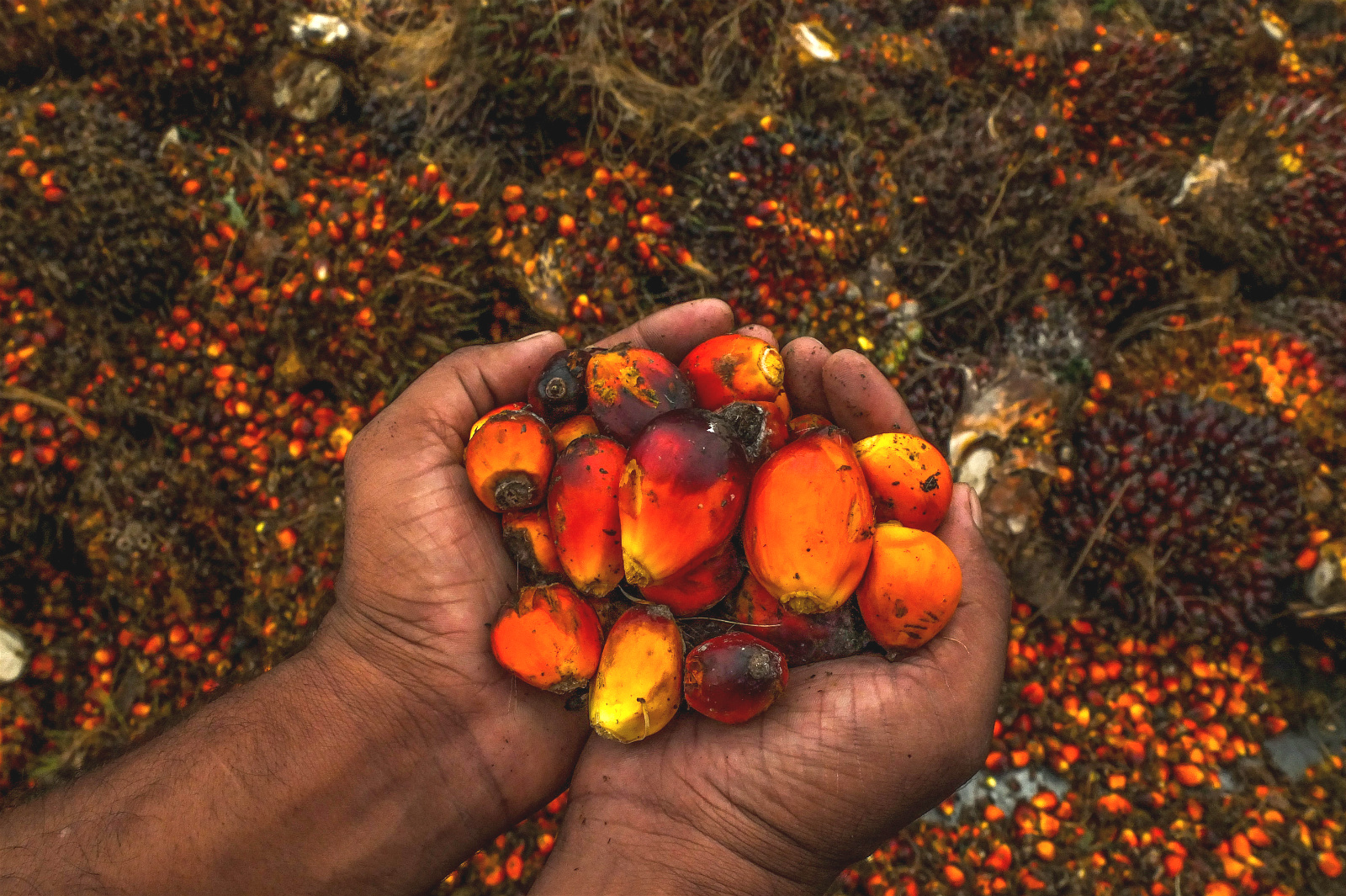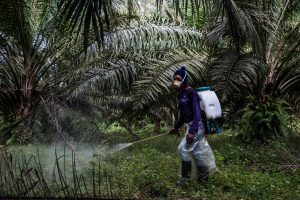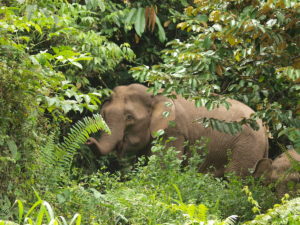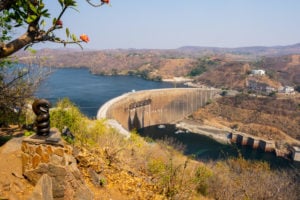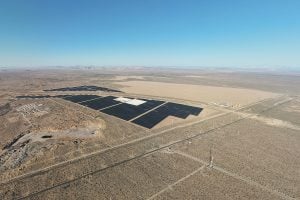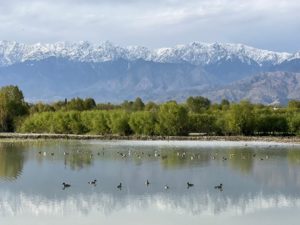On 18 December 1591, a seven-month sea voyage from Africa to England ended when a ship anchored at Limehouse docks in London. Along with 150 elephant tusks and 589 sacks of pepper, the ship carried 32 barrels of palm oil. It is thought to have been the first arrival into Europe of what would become perhaps the most controversial plant product that is not a drug.
Editor’s note
This article was updated and expanded on 13 June 2023, having originally been published on 4 November 2019.
To say that palm oil is divisive is an understatement. To its advocates, it is a cornerstone of economic development, making efficient use of land and supporting millions of smallholders through profitable international trade. To its detractors, it is a cause of deforestation and social conflict, a direct threat to endangered species and a contributor to climate change.
As demand for palm oil continues to rise, there is growing concern about its sustainability and awareness that some palm oil is “good” and some is “bad”.
▪️ What is palm oil?
▪️ What is it used for?
▪️ Where does palm oil come from?
▪️ Who are the biggest users of palm oil?
▪️ Why get oil from palms?
▪️ Why is palm oil so controversial?
▪️ How big a problem is this?
▪️ Shouldn’t we just ban palm oil?
▪️ How can we tell the good from the bad?
▪️ What about eco-labels?
▪️ Is certified palm oil really sustainable?
▪️ Is palm oil still driving deforestation?
▪️ How does palm oil compare to other commodities?
▪️ So how do we end deforestation?
What is palm oil?
The term covers various things we get from a species of tropical palm called the African oil palm (Elaeis guineensis). “Crude palm oil” is squeezed from the palm’s fleshy red fruit, while “palm kernel oil” is extracted by crushing the fruit’s hard seed. Finally, many “palm oil derivatives” are acquired through industrial processes, which together account for about 60% of global palm oil use.
What is it used for?
Palm oil is in around half of all packaged products sold in supermarkets, everything from processed foods to cosmetics, soaps and detergents. It is also used as a cooking oil (predominantly in Asia and Africa), in industrial lubricants, pharmaceuticals, animal feeds and increasingly as a fuel – in 2020, 58% of the palm oil imported into the European Union (EU) was destined for biodiesel.
Where does palm oil come from?
The oil palm is native to West Africa, where its relationship with humans goes back thousands of years. However, its profitability was realised in Southeast Asia, when appropriation of oil palm by colonial companies established the first plantations that have now expanded to dominate landscapes. Today, about 83% of all palm oil comes from Indonesia and Malaysia. More than 40 other countries produce it, in far lower but fast-increasing quantities. Thailand accounts for 4% of total production, while the top producers in South America and Africa are Colombia (2%) and Nigeria (2%).
Who are the biggest users of palm oil?
India (18% of the global total), China (14%) and the EU (11%) are the largest importers of palm oil, with Pakistan becoming an increasingly important market (7%).
From a continental perspective, Asia imports 58.4% of all internationally traded palm oil, while Europe takes 20.9% and Africa imports 13.3%. Other continents account for the remaining 7.4%.
Indonesia is also increasingly using its own palm oil. In 2022, domestic consumption was around 18 million metric tonnes (about 45% of Indonesia’s total production). Over half of that was used for producing biodiesel and oleochemicals.
Why get oil from palms?
Oil palm is something of a wonder crop. It yields 4-10 times more oil per hectare than other sources of vegetable oil such as soybeans or coconut palms. The plant accounts for just 9% of the 322 million hectares of land used to produce oil crops globally, yet it produces 36% of the oil. This makes it an efficient and profitable use of land. The economic value of palm oil translates into jobs, infrastructure and tax revenues.
In Indonesia and Malaysia, some 4.5 million people earn a living directly from the palm oil industry. In Indonesia, over 20 million people, which is 7% of the population, depend indirectly on palm oil production for their livelihoods. This all means palm oil could play a big role in reducing poverty – if done right.
Why is palm oil so controversial?
Where to start? The palm oil rush of recent decades – there has been a seven-fold increase in production since 1990 – has come at considerable cost to forests and people who depend on them. This has also had direct consequences for climate.
⚪ Social impacts: Palm oil production has been associated with corruption, forced evictions and land-grabbing. It has sparked conflict with local communities, including indigenous peoples. There have been serious concerns about forced labour, child labour and violations of worker rights on some plantations including low wages, intimidation and sexual harassment. There has been a lack of meaningful inclusion of smallholder farmers in the palm oil supply chain, even though they contribute around 40% of production. Pollution of air from forest fires and water from plantation run-off has also harmed human health.
⚪ Harm to forests and biodiversity: Oil palms now cover a combined area about the size of Syria, and 45% of oil palm plantations in Southeast Asia are on land that was still covered with forest in 1989. Much of the deforestation has been in Indonesia and Malaysia, destroying the habitat of rare species such as orangutans, tigers, rhinos and elephants. As expansion for oil palm plantations takes place in new frontier regions in Latin America and West Africa, the threat to standing forests remains.
⚪ Climate impacts: Deforestation, degradation of peatlands and associated fires all contribute to climate change. According to a 2018 study, replacing rainforest with oil palm plantations releases 61% of the carbon stored in the forest, mostly into the atmosphere. Each hectare of rainforest converted releases 174 tonnes of carbon.
How big a problem is this?
The ubiquity of this commodity and the growing demand for it highlight the scale of the challenge. Between 2000 and 2015, the global average amount of palm oil consumed per person each year doubled to 7.7 kg. And with global demand for palm oil set to rise from 76 million metric tonnes today to an estimated 264–447 million by 2050, it’s clear that the way we produce and consume palm oil needs to change if the industry wants to do more good than harm in the future.
Shouldn’t we just ban palm oil?
No. That could have disastrous effects. It would negatively affect the livelihoods of millions of people, and producing alternative oils would require even more farming land. If the world’s entire supply of vegetable oils came from palm oil, we’d need 77 million hectares of land. If it came solely from sunflower oil, on the other hand, we’d need more than four times the amount of land (312 million hectares). Environmental organisations such as the International Union for Conservation of Nature say that, instead, we need to prevent further deforestation for new oil palm plantations and focus on promoting sustainable production.
But how can we tell the good from the bad?
It is not easy, for a couple of reasons. First, many products contain palm oil but their labelling does not make this clear; palm oil derivatives with names like sodium lauryl sulfate or propylene glycol are listed in the ingredients. Second, the complexity of palm oil supply chains mean it is not easy to trace these ingredients back to the land on which the oil palm fruit was harvested. This makes it hard to tell if palm oil comes from plantations that have deforested land or infringed local people’s rights.
What about eco-labels?
Various schemes certify companies and/or supply chains as “sustainable” if they meet certain environmental and social criteria. These schemes use different standards and means of verifying performance, and some leave much to be desired. Some producer countries like Indonesia and Malaysia have introduced their own standards for sustainable palm oil production. The Roundtable on Sustainable Palm Oil (RSPO) is widely recognised as the strongest standard. However, about one-fifth of globally traded palm oil is certified by the RPSO – and it isn’t always labelled as such.
Some producers are going further than certification, electing to adopt regenerative farming and organic practices. These methods centre on the importance of soil vitality, encouraging a more diverse farming system through inter-cropping and using organic wastes as fertilisers. Though these practices are far from being applied at scale, the early adopters are paving the way for transforming the sector.
So, is certified palm oil really sustainable?
Some academics and non-governmental organisations say certification standards and audits are too weak or, worse, that they greenwash the damage companies do. Others say that in the absence of stronger national laws and regulation, certification is the best tool for reducing the harmful impacts of palm oil production. There is no doubt that the RSPO has galvanised change through improvement of industry practices. But with legislative changes from the EU, UK and US shifting palm oil sustainability from a voluntary to a mandatory space, the existing certification structures within the sector are likely to evolve.
Is palm oil still driving deforestation?
Yes and no. Palm oil has certainly played a part in global forest loss and for that the sector has received heavy scrutiny. But a study published last year found that deforestation in Indonesia, Malaysia, and Papua New Guinea attributed to plantation development has fallen to its lowest level since 2017. Another study showed that in 2018–2020, deforestation for palm oil in Indonesia was 45,285 hectares per year – only 18% of its peak in 2008–2012. The widespread adoption of zero-deforestation commitments and efforts to increase transparency within the sector are believed to have contributed to this trend.
How does palm oil compare to other commodities?
It is important to think about palm oil in relation to other soft commodities. Every year, the world loses around 5 million hectares of forests, and about 80% of this is driven by agricultural expansion for producing commodities.
‘Forest-risk commodities’ are those that may contribute to tropical deforestation and degradation. They include, but are not limited to, cattle (for beef and leather), soy, palm oil, cocoa, timber, maize, coffee, rubber, paper and pulp.
In consumer markets influenced by anti-palm-oil campaigning, the perception that palm oil drives deforestation has stuck. But if we truly want to tackle global deforestation, we need to expand our understanding of the what, where and why of global forest loss.
Expanding pasture for cattle grazing is by far the greatest agricultural threat to forests and climate
Palm oil is certainly still a contributor to forest loss, but expanding pasture for cattle grazing is by far the greatest agricultural threat to forests and climate. In 2021, deforestation rates in the Brazilian Amazon reached their highest level in 15 years, with nearly three-quarters attributed to expanding pasture. Meanwhile, soy production, 77% of which is fed to livestock for meat and dairy production, has contributed greatly to forest loss in the Amazon. However, the introduction of Brazil’s ‘Amazon Soy Moratorium’, which aims to limit the production of soybeans on recently deforested lands, has effectively shifted the deforestation into other important ecosystems like the vast tropical grasslands of Brazil’s Cerrado.
Meanwhile, rubber production is an emerging threat to west and central Africa’s climate-critical tropical forests. A recent analysis has found that 52,000 hectares of natural forests were cleared to establish rubber plantations between 2000 and 2020 across Cameroon, Gabon, Nigeria, Côte d’Ivoire, Ghana and Liberia.
So how do we end deforestation?
This really is the question of our time. Thankfully, global society is recognising that we cannot address the climate crisis without ending deforestation, which accounts for 15% of global carbon emissions. This took centre stage at the 2021 UN climate talks in Glasgow when 141 countries committed to reversing forest loss and land degradation by 2030. This reinvigorated existing commitments made under the New York Declaration on Forests back in 2014.
While international cooperation is crucial, corporate commitments are also essential. The palm oil sector has made more progress in addressing deforestation than other commodities have. An analysis by Forest 500 found that 72% of palm oil companies have deforestation commitments, but other commodities like pulp and paper (49%), soy (40%), beef (30%) and leather (28%), have much lower commitment levels. A meagre 28% of companies have commitments for all of the commodities associated with deforestation in their supply chain.
The EU, as the second largest market for forest-risk commodities after China, has adopted legislation requiring mandatory due diligence for companies connected to these commodities. In short, companies will have to prove their products are not linked to deforestation. While some argue that it falls short on human rights issues and could alienate small-scale farmers, the legislation is a holistic approach to addressing interconnected challenges we face as a global society – particularly sustainable development, food security, ensuring livelihoods, and reducing greenhouse gas emissions.
This kind of holistic regulation can raise awareness among consumers and companies, pushing change across the board. But solutions must also include reforestation programmes, sustainable land-use practices, and effective protection of the forested areas that remain.
Simultaneously, and perhaps most importantly, we need also to address the root causes of deforestation: demand for food and biofuels, overconsumption in wealthy nations, changing diets, and weak land tenure systems that undercut Indigenous customary land owners.
